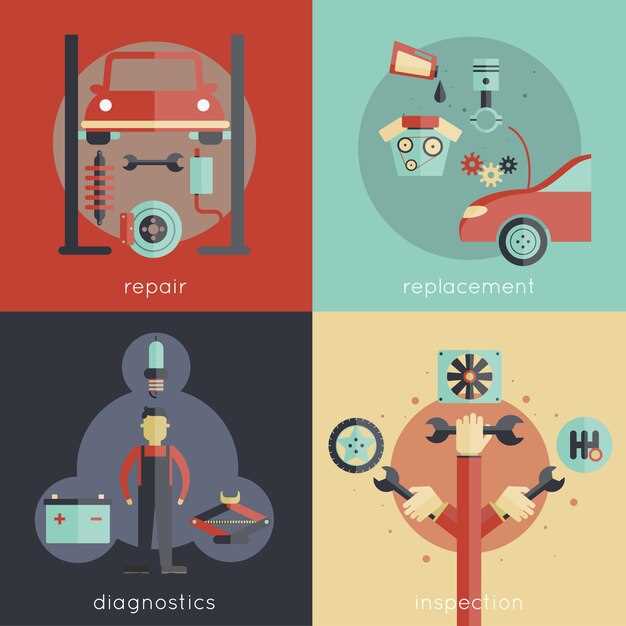
Undertaking the installation of a rebuilt motor is a significant investment in both time and resources. However, the critical phase that follows the installation is equally important: the break-in period. Properly breaking in a rebuilt engine is essential for ensuring longevity and optimal performance. During this time, the engine components will establish the necessary wear patterns and seating that will ultimately determine its efficiency and reliability.
Understanding Break-In Procedures is crucial for any vehicle owner or mechanic. The break-in process allows the new components to conform to each other through controlled operation, thus minimizing the risk of premature wear and engine failure. Each engine rebuild will have its own specific requirements based on the components used and the manufacturer’s recommendations. Therefore, it is paramount to consult the rebuild manual to align your break-in approach accordingly.
During the break-in period, varying the engine speed, avoiding full-throttle acceleration, and monitoring oil pressure closely are just a few of the key factors to consider. The initial miles driven should be approached with a mindset focused on gradual load application, which will promote the smooth seating of piston rings and bearings. This phase not only aids in proper lubrication but also allows for any potential issues to be identified before they escalate, ensuring the long-term health of the motor.
Step-by-Step Guide to Initial Start-Up for Rebuilt Engines

Starting a rebuilt engine for the first time is a critical process that requires careful attention to detail. Follow these steps to ensure a successful initial start-up.
1. Prepare the Engine Bay: Before beginning, ensure that the engine bay is clean and free from debris. Check all connections, including battery terminals, fuel lines, and electrical wiring, ensuring everything is securely attached.
2. Prime the Oil System: To prevent damage, manually prime the oil system. This can be done by removing the spark plugs and using a drill to turn the oil pump. Alternatively, you can also crank the engine briefly without starting it to circulate oil. Check the oil pressure gauge during this step.
3. Check Fluid Levels: Verify all fluid levels before starting the engine. This includes engine oil, coolant, transmission fluid, and power steering fluid. Top off any fluids as necessary to ensure optimal performance.
4. Verify the Fuel System: Confirm that the fuel system is operational. If using carburetors, ensure they are primed. For fuel-injected systems, check for proper fuel pressure. Inspect for leaks in the fuel lines and connections.
5. Set Ignition Timing: If necessary, adjust the ignition timing before starting the engine. Refer to the manufacturer’s specifications. A timing light can help ensure that the timing is set accurately.
6. Start the Engine: With everything in place, start the engine. Allow it to idle initially, observing any unusual noises or vibrations. Monitor the oil pressure gauge closely to ensure it’s within the normal range.
7. Check for Leaks: After the engine has started and idled for a short time, inspect for any fluid leaks around the oil pan, coolant system, and fuel lines. Address any leaks immediately.
8. Monitor Engine Temperature: Keep an eye on the engine temperature, ensuring it rises to the normal operating range. If the engine overheats, turn it off and investigate the cooling system.
9. Perform Initial Break-In: After the initial start-up, follow the manufacturer’s guidelines for break-in procedures. This typically involves varying engine RPMs and avoiding extended idling.
10. Recheck Fluid Levels: After the engine has been running for about 20-30 minutes, turn it off and recheck all fluid levels. Top off any fluids if necessary, and check for any signs of leaks again.
11. System Check: Finally, perform a complete systems check. Listen for any unusual sounds, check the operation of accessories such as the alternator and water pump, and ensure that the check engine light does not remain on.
Following these steps will help ensure a successful initial start-up for your rebuilt engine, setting the stage for optimal performance and longevity.
Optimal RPM Ranges During Engine Break-In Period
During the engine break-in period, maintaining optimal RPM ranges is crucial for ensuring the longevity and performance of a rebuilt motor. This phase typically lasts between 500 to 1,500 miles, depending on the manufacturer’s guidelines and the specific engine design.
For most rebuilt engines, the optimal RPM range during this break-in period is generally between 1,500 and 3,000 RPM. Operating within this range allows the engine components to wear in gradually, promoting effective seal formation between piston rings and cylinder walls.
In the initial stages of the break-in, it is advisable to keep the RPM closer to 1,500 RPM. This helps in reducing stress on the engine parts while allowing sufficient oil circulation. As the break-in period progresses, the RPM can be incrementally increased towards 3,000 RPM while avoiding prolonged full-throttle applications.
It is also important to vary the RPM during this period rather than maintaining a constant speed. This variation helps in properly seating the rings and allows for uniform wear across all engine components. Acceleration and deceleration during driving can assist in achieving this goal.
Avoiding high RPM ranges above 3,500 RPM during the early break-in phases significantly reduces the risk of damaging freshly installed components. By adhering to these RPM guidelines, engine builders can ensure that the rebuilt motor is properly seated and ready for optimal performance and longevity.
Common Mistakes to Avoid While Breaking In a Rebuilt Motor

Breaking in a rebuilt motor is a critical process that significantly affects the engine’s longevity and performance. To ensure a successful break-in, it is essential to avoid common mistakes that can lead to premature wear or failure.
1. Ignoring Manufacturer Guidelines
Each rebuilt engine may have specific break-in procedures outlined by the manufacturer. Failing to adhere to these guidelines can lead to improper seating of rings and other components, ultimately affecting engine efficiency and durability. Always consult the rebuild specifications provided.
2. Overlooking Initial Oil Change
Many new engine builders recommend changing the oil and filter after the initial break-in period, often around 500 to 1,000 miles. Neglecting this step may allow metal particulates from the initial wear to circulate and cause damage. Ensure that you follow the recommended oil change intervals for optimal performance.
3. Revving the Engine Too High
During the break-in phase, it is critical to avoid excessive engine revs. Running the engine at high RPMs can cause undue stress on components that are still in the process of settling. Keep the engine speed varied but moderate, typically below 3,000 RPM, for the first few hundred miles.
4. Not Varying Engine Speed
Maintaining a constant RPM during break-in can lead to uneven wear patterns. It is important to vary the throttle and engine speed regularly. This approach helps in creating necessary pressure and heat in different components, ensuring proper seating of engine parts.
5. Skipping the Load Test
Some owners may avoid putting their rebuilt engine under load to “play it safe.” However, this can hinder the proper seating of piston rings. Gradually introducing the engine to load–such as light acceleration–is essential for establishing a proper seal during the break-in period.
6. Neglecting Cooling and Timing Checks
Proper cooling system function and ignition timing are vital during the break-in phase. Overheating or incorrect timing can lead to catastrophic engine failure. Monitor temperature gauges and ensure the engine operates within optimal parameters during this critical period.
7. Using Incorrect Fuel or Oil
Using the wrong fuel or oil can impact the break-in process significantly. It is crucial to use high-quality oil specifically designed for flat-tappet cams during the initial break-in stage, along with the recommended octane level of fuel to avoid detonation and potential damage.
By steering clear of these common mistakes, you can maximize the performance and lifespan of your rebuilt motor, ensuring that it operates reliably for years to come.
